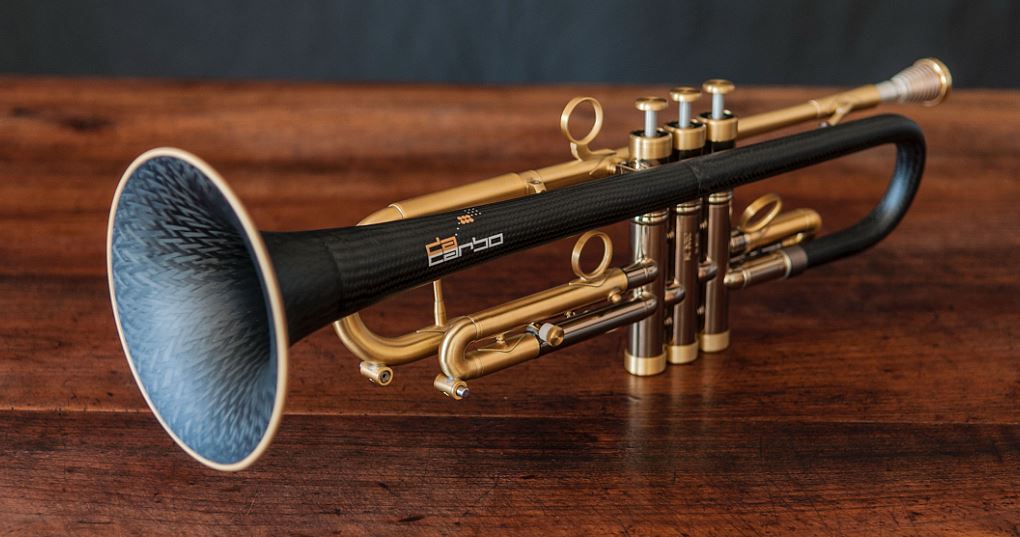Nägeli Swiss AG, a family owned SME, can be considered as an innovator in the processing of advanced materials, developing components made of carbon fiber and glass fiber. With different manufacturing processes such as autoclave-free prepreg processing, RTM or thermoforming, the company manufactures prototypes as well as serial parts and has been involved in projects in an array of diverse industries, including Aeronautics, Formula 1 and Space. Now the company has developed a trumpet bell that is set to revolutionise the music industry using Araldite composite resins from Huntsman Advanced Materials.
Surface quality and geometry as specific challenges
In co-operation with daCarbo AG, the initiator of the project, Musik Spiri in Winterthur, the Technical University of Rapperswil and the Institute of Music Acoustics of the University of Vienna, Nägeli Swiss AG were tasked to be the first to develop a trumpet bell made from carbon fiber reinforced plastic (CFRP).
To ensure the surface of the trumpet bell met the high quality finish required on the inner side of the bell (influence to the sound) as well as the outside (aesthetics), the viscosity behaviour of the resin system had to be suitable for injection under temperature and the curing cycle of the resin had to take into account that a melting core is used so that the temperature range is limited.
Another challenge lay in the geometry of the bell, which is connected with a U-bend to the metal valve engine. This geometry results in a non-demoldable core, which is why an appropriate process for melting core technology has to be developed.
Trumpet bell made using RTM (Resin Transfer Moulding) technology
The trumpet bell is made using RTM (Resin Transfer Moulding) technology. Dry fibers in the form of braided tapes are preformed and placed in a mold and Resin is injected into the closed and heated mold. A vacuum is applied, resin injected at high pressure and after the curing cycle, the finished part can be demolded.
Percentage of non-audible vibrations is reduced
The great advantage of the daCarbo-instruments lies in the measurable and noticeable lower blowing energy that is necessary for the playing of a sound. Due to the high stiffness of the instrument panel and the good damping properties of composite materials, the percentage of non-audible vibrations of the bell is reduced, therefore increasing the reflection component of the sound. Blind tests have shown that daCarbo-instruments correspond to the tone characteristic of the typical conventional trumpet sound and are readily accepted in professional orchestras.
Production largely automated providing constant quality
And the daCarbo Trumpet offers further advantages. The specific geometry leads to an exceptionally clear tone. The production, in contrast to the manual production of brass instruments, is largely automated, providing a constant quality, corrosion problems from condensation are non-existent inside the instrument and ultimately the harmonically rich character of the high tone register leads to a warm and open sound. Famous musicians like Arturo Sandoval, Jon Barnes or Roy Hargrove have tested the daCarbo trumpet and currently the trumpet bell is in serial production in three different versions, to meet the individual requirements of players.



